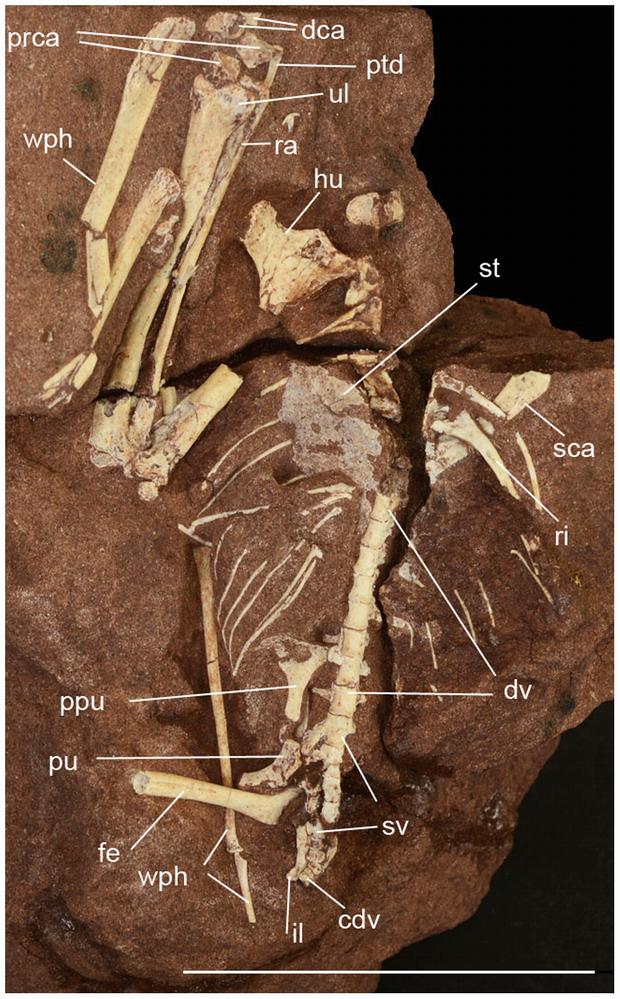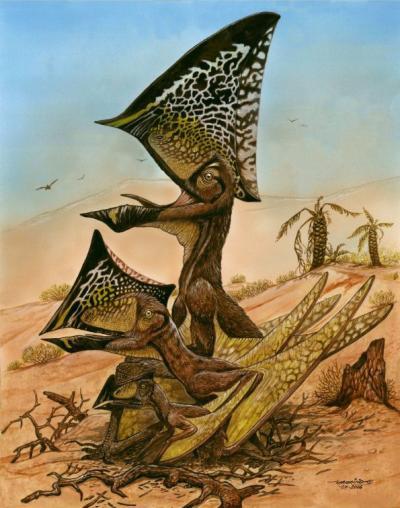Scientists have reported discovery of a new ancient pterosaur species called Caiuajara dobruskii - and the bones of 47 members to go with it. Caiuajara dobruskii lived during the Cretaceous in southern Brazil, according to the paper.
There may be more among the hundreds of bones. The pterosaur bone bed in the interdunal lake deposit of a Cretaceous desert contains at least 47 individuals, with wing spans of between 0.65 and 2.35 meter. Caiuajara dobruskii is the southermost occurrence of the edentulous clade Tapejaridae (Tapejarinae, Pterodactyloidea) recovered so far.
Caiuajara dobruskii is different from other members of this clade in several cranial features, mostly notably in ontogenetic variation in the size and inclination of the premaxillary crest, changing from small and inclined (~115°) in juveniles to large and steep (~90°) in adults. The available information suggests that this species was gregarious, living in colonies, and most likely precocial, being able to fly at a very young age, which might have been a general trend for at least derived pterosaurs.

Caiuajara dobruskii gen. et sp. nov., (CP.V 869), partial articulated skeleton. Scale bar equals 50: cdv, caudal vertebrae; dca, distal carpal series; dv, dorsal vertebrae; fe, femur; hu, humerus; il, ilium; prca, proximal carpal series; ptd, pteroid; ppu, prepubis; pu, pubis; ra, radius; ri, ribs; sca, scapula; st, sternum; sv, sacral vertebrae; ul, ulna; wph, wing phalanx. Credit:
doi:10.1371/journal.pone.0100005
The deposits
from the outskirts of Cruzeiro do Oeste
correspond to the Caiuá Group that represents a sand sea formed in an interior paleodesert whose paleontological content was up to know limited to infrequent tetrapod ichnofossils. This exceptional occurrence, combined with the large number of three-dimensionally preserved individuals, sheds new light on the biology of the volant animals.

Artistic reconstruction of three ontogenetic (growth) stages of the new pterosaur Caiuajara dobruskii. Credit: Maurilio Oliveira/Museu Nacional-UFRJ






Comments